Fig. 16.1
Gripping the ear while injecting results in injury
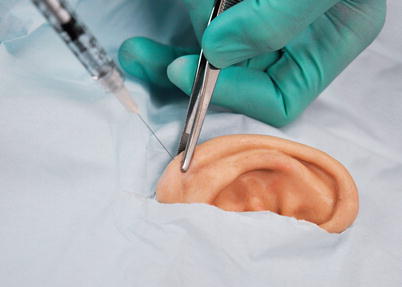
Fig. 16.2
Proper stabilization of the earlobe with forceps while injecting
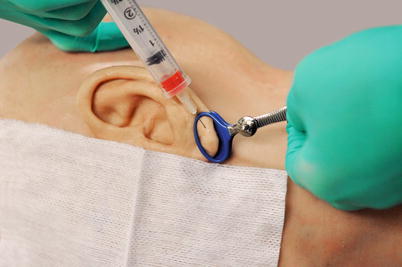
Fig. 16.3
Use of a chalazion clamp to stabilize the earlobe while injecting avoids injury, provides a bloodless surgical field, and allows for intraoperative manipulation of the earlobe
Solution 3
Place a full-thickness suture through an anesthetized ear lobule and cut off the suture needle. Pull the ear lobule in any direction using the two strings secured with a needle driver (Fig. 16.4).
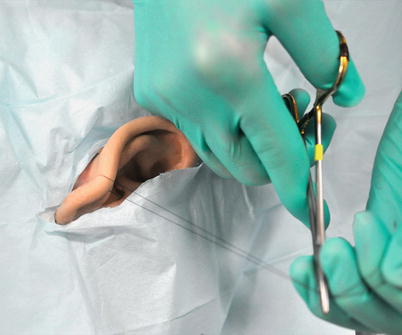
Fig. 16.4
A suture placed through the lobule allows for manipulation of the ear at a distance from the surgical field
Accidents Happen When
The ear is stabilized with bare hands when using the scalpel to de-epithelialize, excise, or suture the skin (Fig. 16.5).
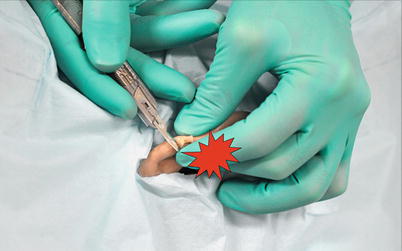
Fig. 16.5
Unsafe method of auricle stabilization while shaving a lesion
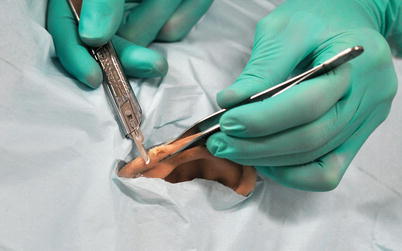
Fig. 16.6
Proper stabilization of the auricle with forceps while shaving a lesion









